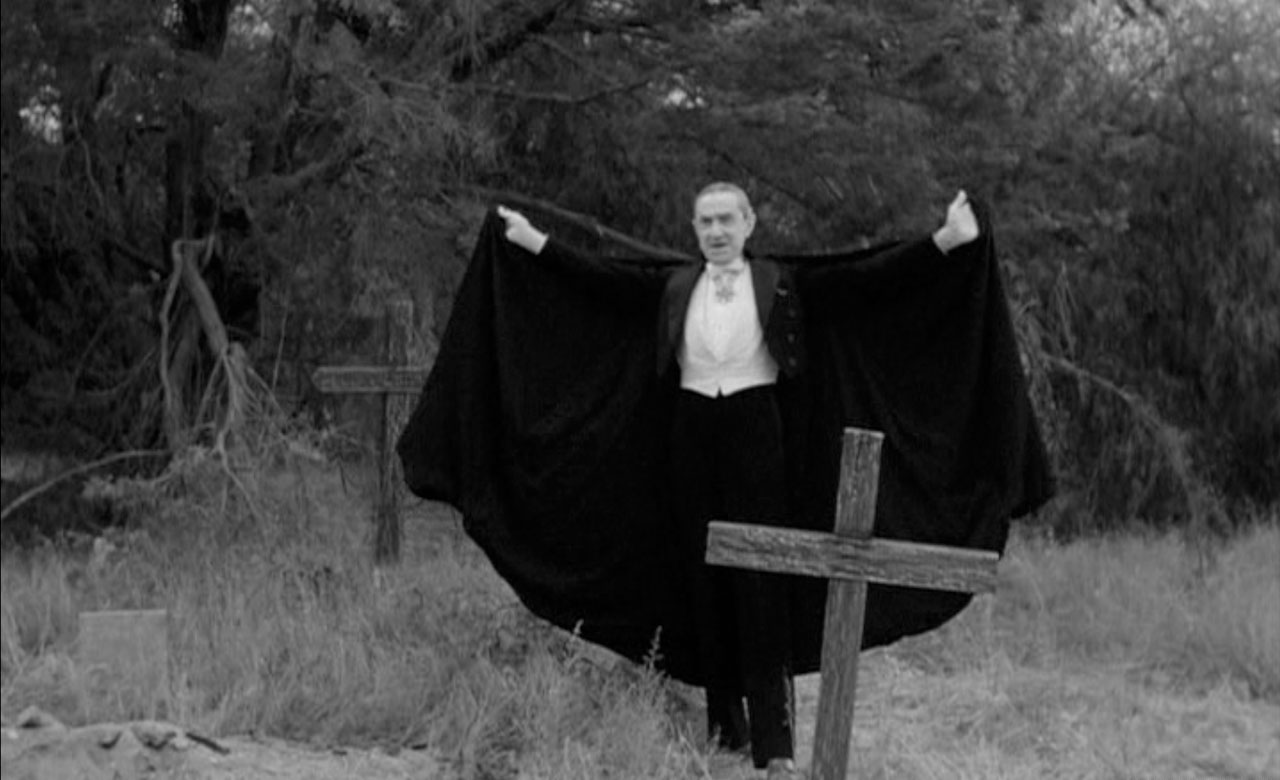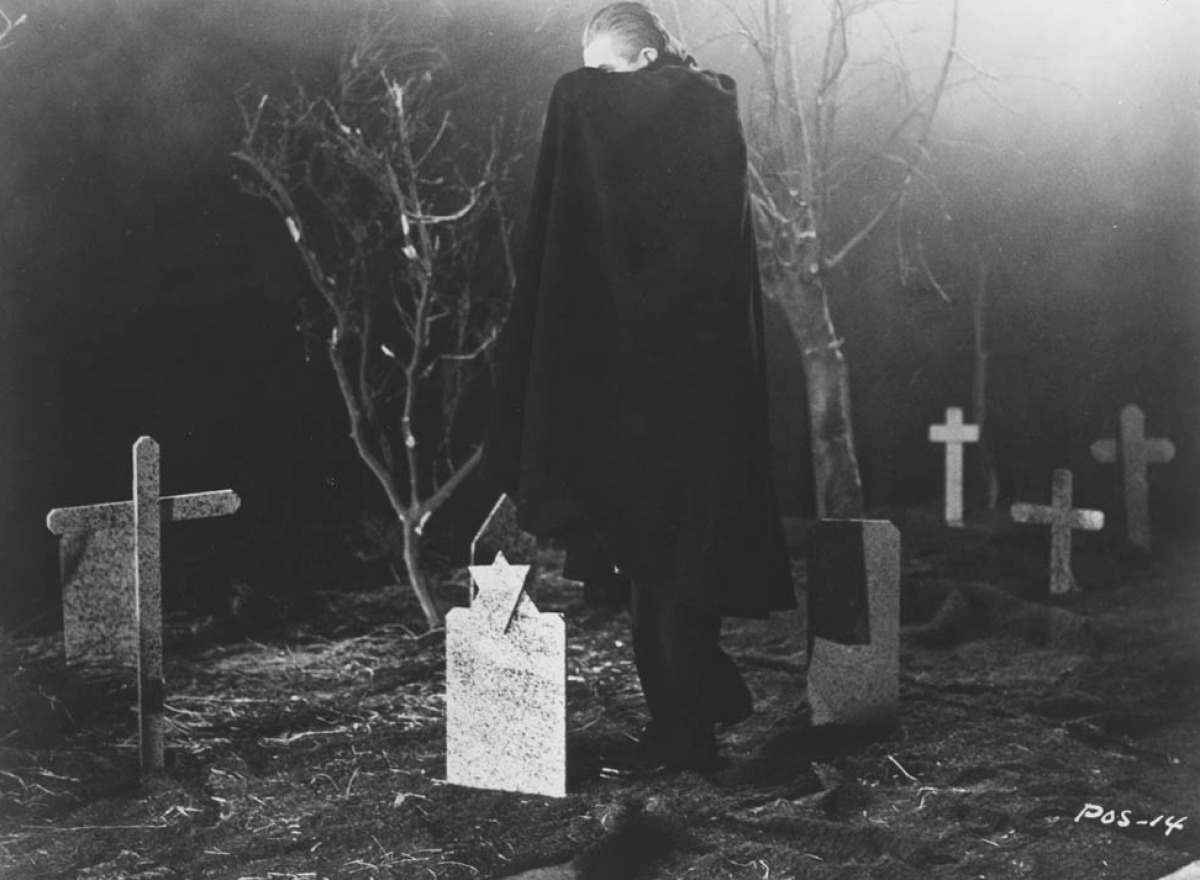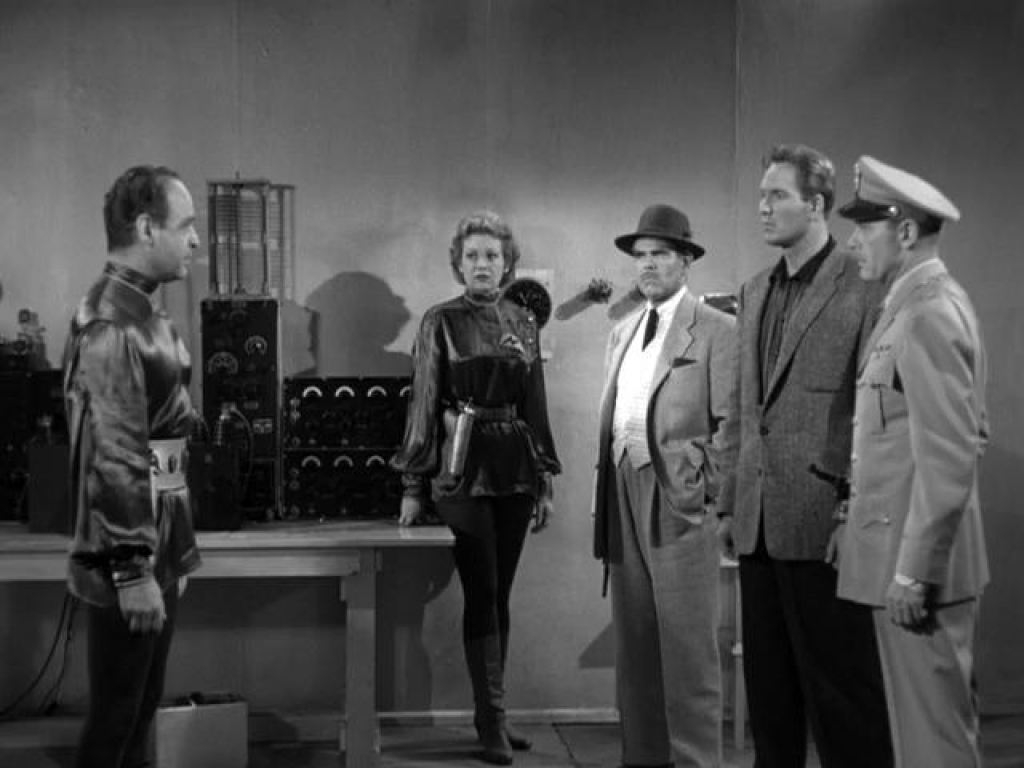How Did “Plan 9 From Outer Space” Become a Classic as Opposed to a Forgotten Failure?
In the mid-1950s, Ed Wood began work on a film called Tomb of the Vampire. It was to be a type of comeback-vehicle for Bela Lugosi, the legendary Dracula (1931) actor with whom Wood had become friends in his last years of life. Lugosi found work in Wood’s low-budget pictures when the actor’s morphine and methadone addictions limited the roles he was offered elsewhere. Various scenes were shot for Tomb of the Vampire, including one of Lugosi crying outside the exterior of Swedish wrestler Tor Johnson’s home, a few shots of him walking through a graveyard, and one where he stands near a highway, donned in one of his actual capes from the Dracula days, delivering a menacing glare. Lugosi died before much else could be shot, but that didn’t stop Wood from recycling these tiny, unrelated bits of footage into his pride and joy project, Plan 9 From Outer Space (1959), the cult-gone-mainstream film that has become the gold standard of “so bad it’s good” cinema.
Ed Wood was a fan of the movies. He had big, wild ideas for stories, but lacked the money, confidence, or support from able collaborators to pull them off. But none of that would keep him from filming them anyway. Wood’s catalog is comprised of films that have become so famous for their campy awfulness in the decades since his death that he is immortalized as a type of anti-genius. His films are so inept in every aspect of production that their voracious fallacies form an undeniable charm. Wood’s movies aren’t just fun to watch because they’re poorly made, but because they’re steeped in the waters of Wood’s fantastic and unique passion. Plenty of bad movies are just that - bad. Badness alone doesn’t make for a cult classic. There needs to be honesty underneath the badness, like a four-year-old who is utterly terrible at baseball but gets up to the plate and swings the bat every inning, doing everything he can to fight the reality that he’s just not gifted at the game. There may not be a ton of talent at play in Wood’s films, but there is plenty of personality. And that personality triggers affection.

Ed Wood took his directionless Tomb of the Vampire footage of Lugosi—all five minutes of it—and concocted a plot around the elder actor’s miscellaneous movements that wrapped zombies, aliens, vampires, conspiracy theories, accidental slapstick humor and a detective story into one egregious picture filmed on a tiny budget supplied by a local Baptist church. Wood agreed to get baptized in exchange for the sum—$60,000—which the church leader hoped would turn into a windfall enabling him to fund production of his dream film, a Billy Sunday biopic. Needless to say, no such film exists.
Wood billed Plan 9 as Lugosi’s “final film,” attracting the likes of fellow Z-grade celebrities Vampira and Tor Johnson, although Wood was forced to use his wife’s chiropractor as Lugosi’s stand-in for most of the film. It didn’t matter that the chiropractor looked nothing like Lugosi and was considerably taller—Wood simply directed him to hold his cape in front of his face and meander around, which, as it turns out, is the extent of the directorial wisdom he offered to the rest of the confused cast as they fumble through the film.

Plan 9 began airing on TV less than two years after its release. The film lived in relative cult obscurity, like all of Wood’s work, until 1980 when Michael and Harry Medved dubbed the film “the worst movie ever made.” This proclamation came on the back of heavy reader suggestion following the publication of the brothers’ 1978 book “The Fifty Worst Films Of All Time.” People asked how the Medveds created such a compendium and failed to include Plan 9. Their response was The Golden Turkey Awards, a follow-up production which honored Plan 9 for all its glorious ineptitude. In the lexicon of cinema and cult filmmaking, the title took hold and Plan 9 morphed into a cultural icon. It was defined by a community that wanted to celebrate its schlock.
If nothing else, Plan 9 is a testament to making something out of nothing. When Wood couldn’t afford to shoot a scene, he used stock footage. Some moments in the film are clearly footage from the Korean War, complete with scenery involving Asian thatched huts, yet Plan 9’s action takes place in California. When Wood compiled scenes, he haphazardly cut between day and night, studio and location, with amateurish disregard for continuity. The film’s incompetent script teeters between rambling nonsense and needlessly-elevated language that simultaneously feels idiotic and intelligent, but never logical.

The Dissolve writes, “It’s hard to argue that Plan 9 From Outer Space is a misunderstood classic; it’d be easier to make that case around Glen Or Glenda (1953), Wood’s deeply personal, intensely surreal essay film about transvestitism and angora fetishes. But there are some ways in which Plan 9 was clearly ahead of its time. It was a zombie movie a decade before George Romero popularized the creatures in Night Of The Living Dead (1968), and it was a conspiracy-theory movie (‘These things have been seen for years! They’re here, it’s a fact! And the public ought to know about it!’) more than five years before the Kennedy assassination. Its strange mix of genres (horror and science fiction and detective story and war film) with monsters mixed in (aliens and zombies and vampires) gives Plan 9 the feel of a fan film years before such works became an intrinsic part of popular culture. [Wood] was camp before camp was cool, and he made midnight movies before midnight movies existed. Like so many people today, who take to YouTube to document their lives with little to no discernible talent, Wood also felt an insatiable need to express himself—and even expose himself—onscreen. Even though Plan 9 isn’t Wood’s most personal film, it’s still loaded with his fears, frustrations, and obsessions.”
It is also worth noting the effect Plan 9 had on popularizing the joy of viewing poorly-made films. As noted previously, not all bad movies are fun to watch—but Plan 9 opened up the social acceptability of watching bad movies for the sake of ironic entertainment. Wood’s films equally influenced zanier, artistic filmmakers of later generations—perhaps most notably Tim Burton, whose directorial style influence draws equally from the dark wonders of German Expressionism and the campy idiocy of Ed Wood so profoundly that he directed Wood’s Oscar-winning biopic in 1994, with Johnny Depp as the titular role. (It’s valid to argue Tim Burton is a big-budget version of Ed Wood—perhaps a vision of what Wood could have been if he had Burton’s resources and stability).

You can’t make “the worst film of all time” without some level of authenticity. Plan 9 holds that title as a badge of honor, not contempt. There are plenty of low-quality films that lack the passion and purity of Plan 9’s idiosyncratic awesomeness, and therein lies the director’s tradition. Wood died in 1978 and didn’t live long enough to witness a public familiar with his work, but his existing status as an icon of B-Movie history is cemented for future generations, with Plan 9 From Outer Space serving as the pillar upon which his contentious legacy will forever be propped.

